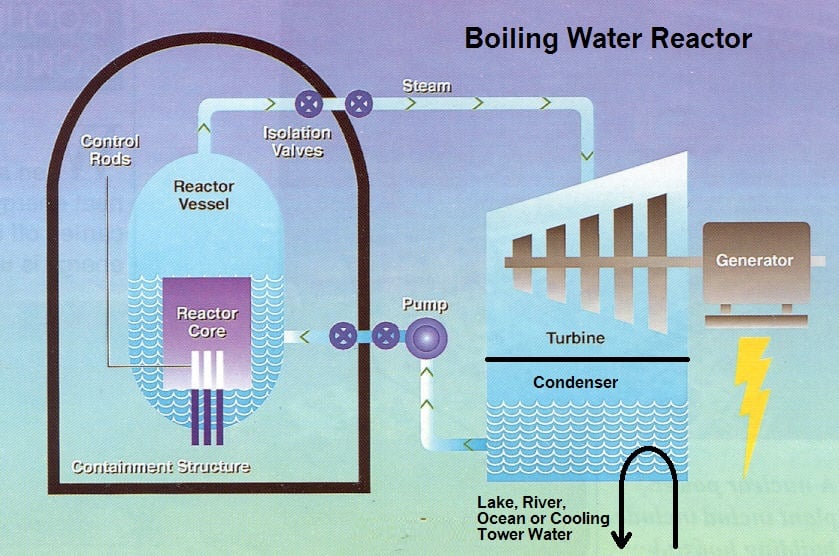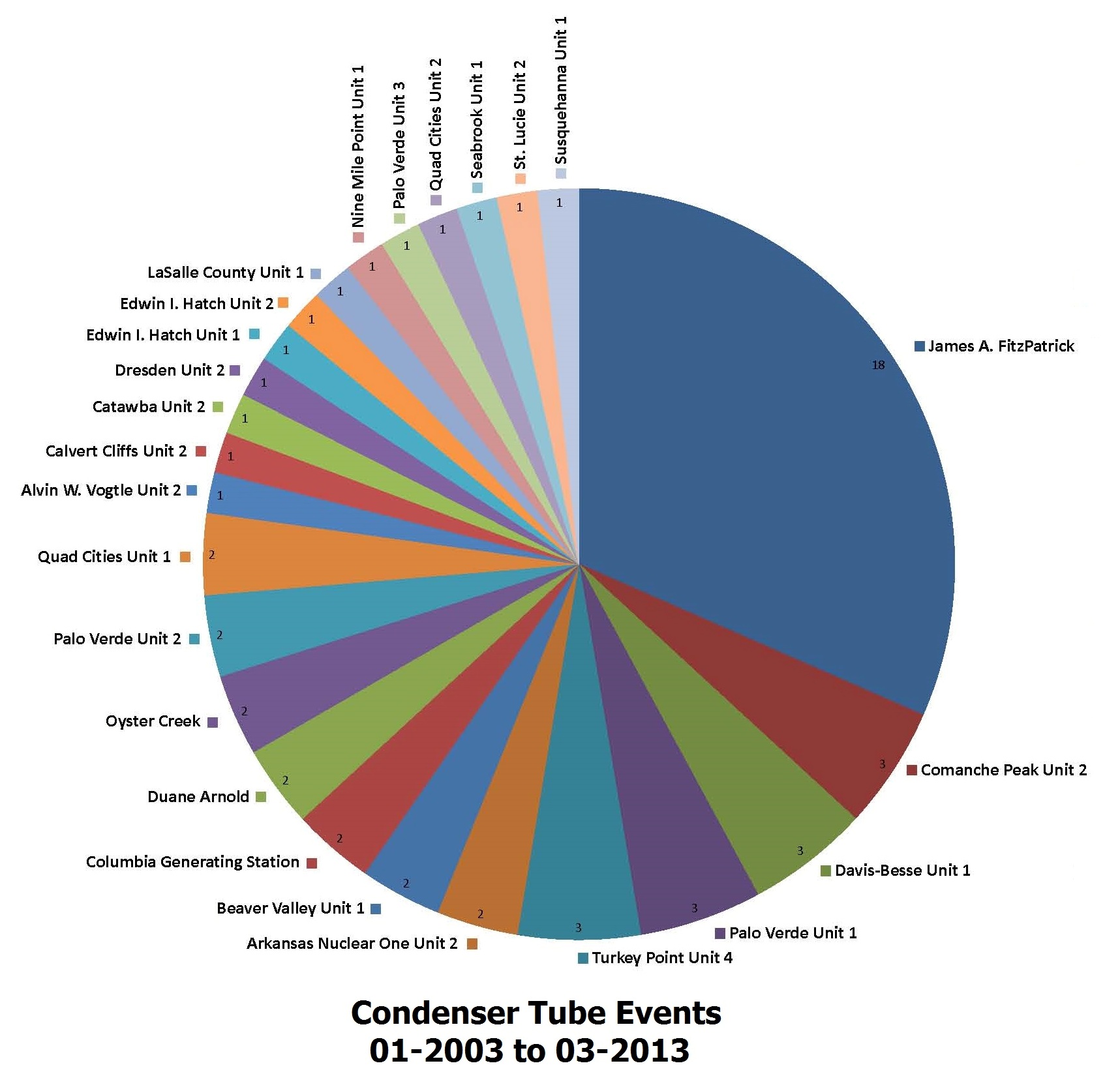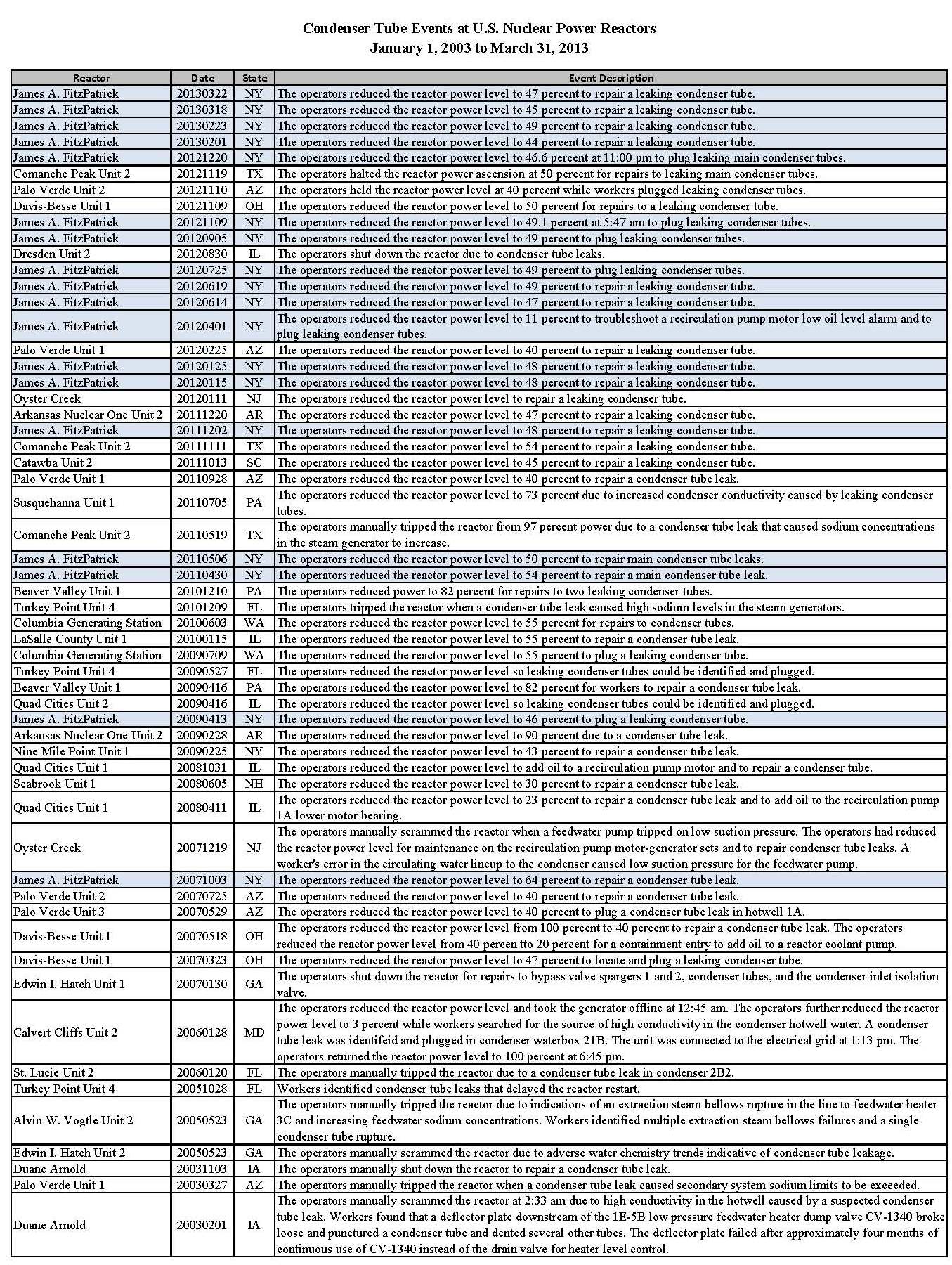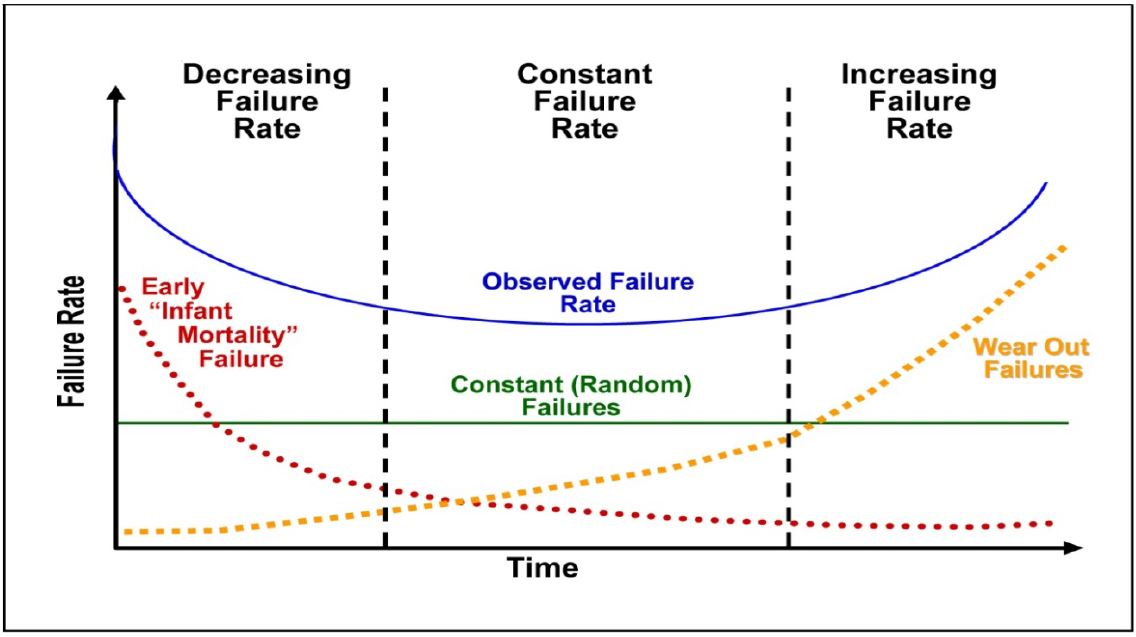The main condenser is a large metal box directly below the low pressure turbines of a nuclear power plant (Fig. 1). After spinning the blades of the turbine, which is connected to a generator that gets rotated to make electricity, the steam enters the main condenser and flows past thousands of metal tubes.
Cooling water flowing on the inside of these tubes absorbs heat from the steam, cooling it and converting it back into water. The cooling water comes from the nearby lake, river, ocean, or cooling tower basin and this water – warmed up to 30°F while passing through the condenser – gets returned to that source. Water, or condensed steam, pooling in the bottom of the condenser is pumped back to the steam generators of a pressurized water reactor or reactor vessel of a boiling water reactor to be reheated and make more steam.
The pressure inside the condenser is lower than the outdoor pressure and lower than the pressure of the water flowing through the condenser tubes. Consequently, when a condenser tube breaks, cooling water leaks into the condenser rather than potentially radioactive steam or water leaking out.
Finding a broken condenser tube is not a simple task. Figure 2 shows some of the thousands of tubes that a broken tube could be hiding among. And a broken tube leaks water into the condenser which already holds tens of thousands of gallons of water. It’s not like a broken pipe elsewhere in the plant that leaves a tell-tale puddle on the floor beneath it to give its location away. One technique for locating broken tubes places a thin plastic film (i.e., Saran Wrap) across the condenser tubesheet. Because the condenser is at lower pressure than the pressure outside, this vacuum pulls air into a broken tube, puncturing the plastic sheet.
Workers at the James A. FitzPatrick nuclear power plant in New York are likely the best in the nation at finding and plugging leaking condenser tubes. Why? They get the most practice. And if it’s true that practice makes perfect, FitzPatrick’s workers must be nearing perfection.
Over the 43 month span between January 1, 2003, and March 31, 2013, nuclear plant owners reported a total of 57 condenser tube events at the 104 nuclear power reactors that operated during at least part of this period (here is a sample of the monthly operating data records received by the NRC from plant owners). Thus, the average nuclear power reactor experienced slightly over half a condenser tube problem during this baker’s decade.
FitzPatrick was by no measure an average nuclear power reactor during this time.
FitzPatrick experienced 18 condenser tube leaks, more than 31% of the total events. The reactor with the next highest number of events only tallied 3 events. FitzPatrick had six times the number experienced by the second place reactor. And 79 reactors did not experience any condenser tube problems during this decade.
More troubling is the recent trend that strongly suggests the situation at FitzPatrick is getting worse. FitzPatrick reported three condenser tube events in 2011, nine in 2012, and four during the first three months of 2013. Sixteen (16) condenser tube events at FitzPatrick across those 11 months when the entire rest of the U.S. fleet – combined – only had twelve (12) such events.
Being the best simply isn’t good enough when it comes to patching degrading condenser tubes. Leaking condenser tubes are much more than annoying – they have safety implications. The condenser is the normal heat sink for the thermal energy produced by the reactor core. The steam entering the condenser has carried away thermal energy from the reactor core. Take away the condenser as a heat sink – as a condenser tube leak can do – and emergency systems must engage to protect the reactor core from overheating damage. The emergency systems are highly reliable but not infallible. The more often one turns to backup emergency systems, the more likely one is to encounter failure of the backup systems, too.
The NRC recently examined the condenser tube problems at FitzPatrick. In a report dated April 23, 2013, the NRC stated:
The [NRC] team observed that Entergy did not properly consider FitzPatrick operating history, specifically the 4 years of outages, when projecting the expected condenser tube life. Consequently, Entergy did not properly plan and design for condenser tube replacement prior to tube leakage which has necessitated frequent downpowers for repair. Planned corrective actions include condenser tube sleeving during the Fall 2012 refueling outage and a complete replacement of all condenser tubes in the Fall 2014 refueling outage.
Seems harsh – how could the owner predicte future condenser tube failures? Did it have pre-cognition or a crystal ball? No, but it should have had science in mind.
It is a well and long established fact that the failure rate for components varies over their service lives by what is called the “bathtub curve” due to its shape. The failure rate is initially high during the “infant mortality” phase as material imperfections, assembly errors, and confusion by the user cause problems. The failure rate drops as these “bugs” work themselves out. The failure rate begins climbing again as components experience wear out failures from rusting, embrittlement, and other aging mechanisms.
The NRC faulted FitzPatrick’s owner for not having properly anticipated the age-related degradation of the condenser tubes so as to repair or replace them before encountering frequent problems. And as the “bathtub curve” shows, condenser tube problems at FitzPatrick will continue to worsen until substantive remedies are implemented.
Our Takeaway
FitzPatrick’s owner is guilty of more than poor planning. It is violating federal safety regulations. Appendix B, Quality Assurance Criteria for Nuclear Power Plants and Fuel Reprocessing Plants, to 10 CFR Part 50 requires that plant owners develop and maintain quality assurance programs. This regulation explicitly states:
As used in this appendix, “quality assurance” comprises all those planned and systematic actions necessary to provide adequate confidence that a structure, system, or component will perform satisfactorily in service.
Sixteen condenser tube events at FitzPatrick during the 11 months between January 1, 2011, and March 31, 2013, is compelling empirical evidence that components are not performing satisfactorily in service. This unsatisfactory performance is made even more evident by the fact that no other nuclear power reactor in the United States is experiencing condenser tube events even close to the frequency they are occurring at FitzPatrick.
The regulation requires plant owners eradicate the cause of problems, not treat their symptoms. In other words, reducing the reactor power level every few weeks to plug more broken condenser tubes is working around the problem, not solving it. That’s not safe. That’s not legal. That’s not right.
Rather than enforcing federal safety regulations, the NRC has instead adopted the “no blood, no foul” approach to recurring condenser tube problems at FitzPatrick – since no one been killed so far, it must be okay. Thus, it’s luck more than safety regulations and safety regulators protecting workers and the public.
If that luck runs out, the NRC becomes an accomplice to whatever harm this regulation-breaking owner inflicts. It would be good if the U.S. Congress compelled the NRC to do its job properly before somebody pays a high price for such nuclear nonchalance.
“Fission Stories” is a weekly feature by Dave Lochbaum. For more information on nuclear power safety, see the nuclear safety section of UCS’s website and our interactive map, the Nuclear Power Information Tracker.





